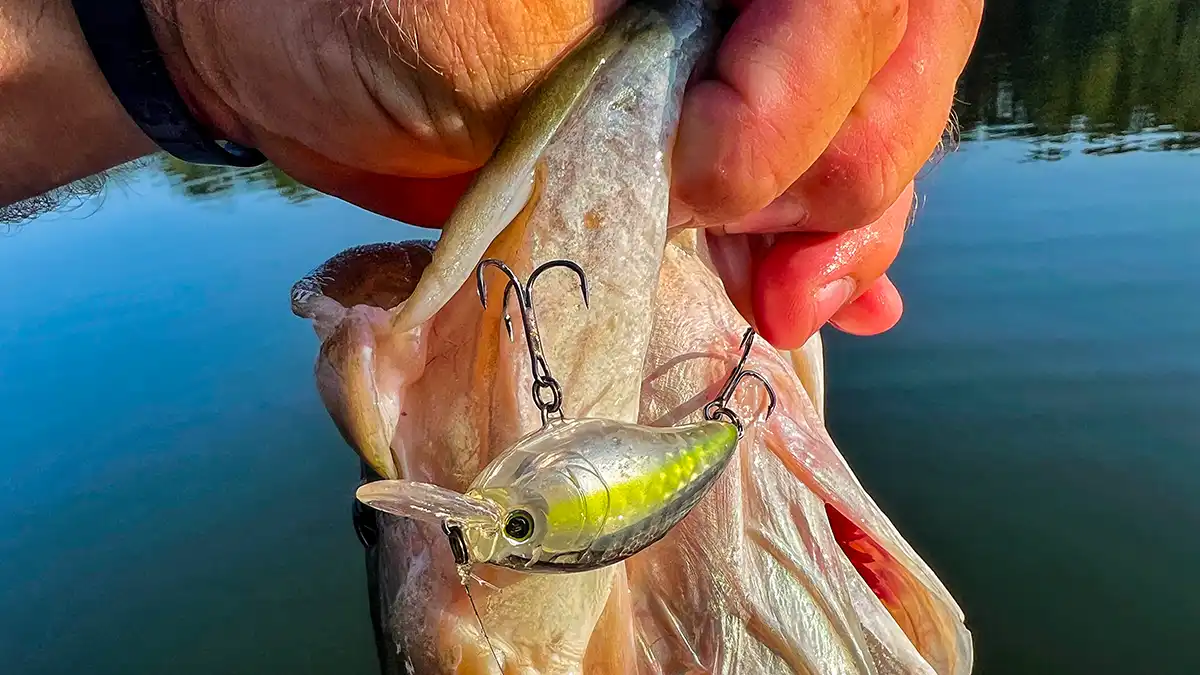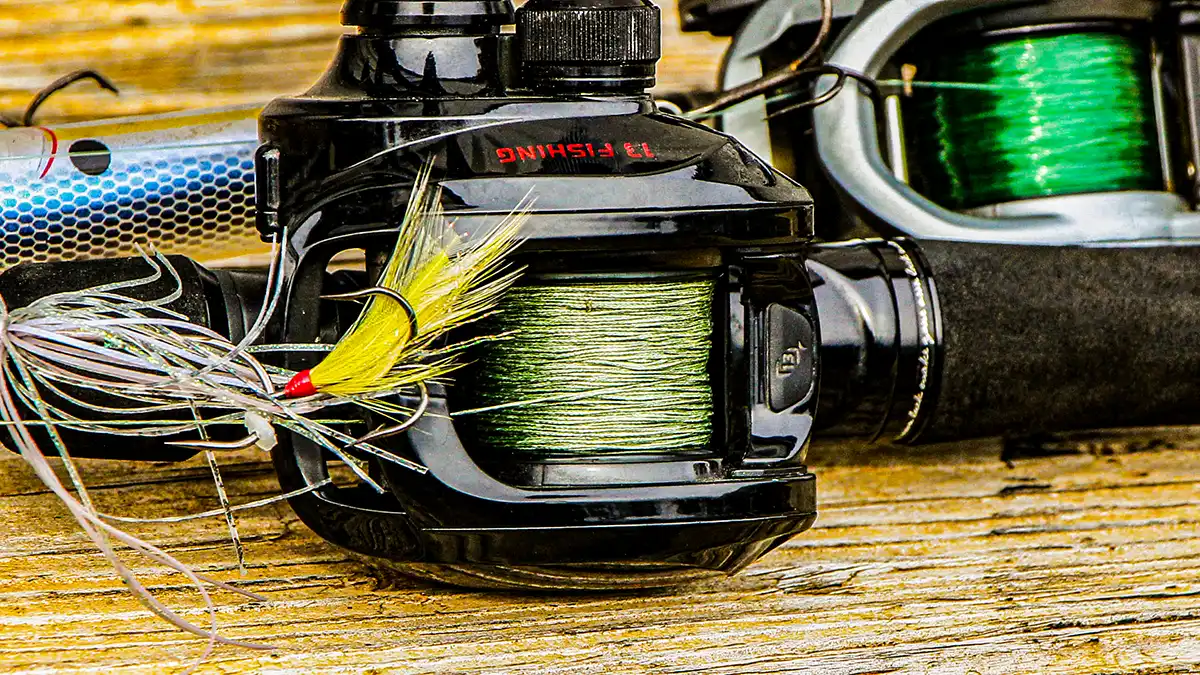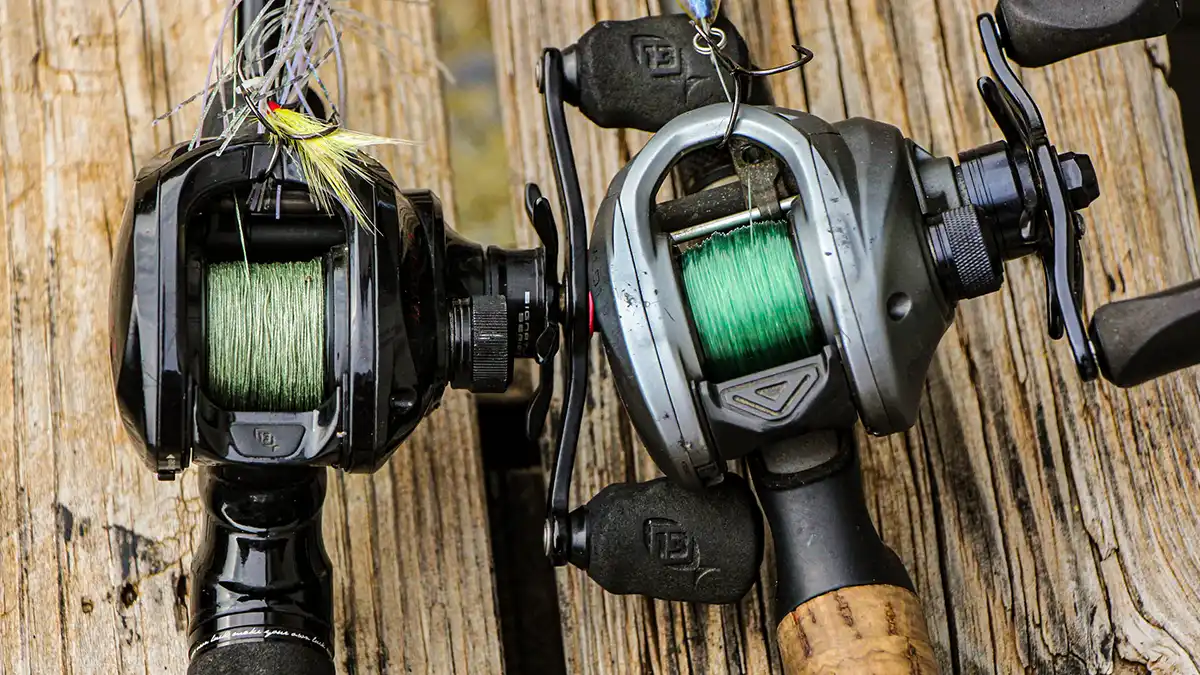Today we’re going to discus the pros and cons of braid vs. monofilament fishing lines. We recently delved into a similar conversation concerning the nuances of fluorocarbon and monofilament lines. In doing so, we laid out some of the differences and similarities of those two line types, so that you could make a better-informed decision on which line to go with in a given situation. That’s the goal again today, only this time centering the conversation on braided line versus monofilament.

THE BASICS OF BRAID AND MONOFILAMENT LINES
Monofilament fishing line, often referred to as “mono”, is typically made of a single strand of nylon. Braided line, or “braid”, is predominately made from tightly woven strands of synthetic fiber.
You’ll notice there is one common quality listed as both a pro and a con for both of these line types— the fact both lines float. This is because in certain situations, the fact that mono and braid both float is detrimental to the technique. Take fishing a swimbait for instance. Because both of these lines float, neither is really ideal for fishing a 5-inch paddle-tail swimbait in 20 feet of water.
To step outside this mono-vs-braid convo for just a moment, the third common line type of fluorocarbon is actually the best for this technique, since it sinks. But catering to today’s conversation, the better of the mono-vs-braid debate for a situation like this would have to be the lesser of the two evils— mono. Mono would be the better choice over braid because it is harder to see underwater. But the stretchiness of mono would make it less adequate for the technique by far as compared to the superior fluoro.
Since both lines float though, they are both good for topwater baits. But is there a time when one is better than the other? Absolutely. Anytime you’re wanting to make really long casts with a topwater, braid is better by far. The thin diameter of braid allows you to pack more line onto your reel, greatly increasing your range. And since braid has less memory, it comes off the reel smoother and has less kinks catching the guides on it’s way through the rod. Lastly, the negligible stretch of braid makes hooking a fish on the end of a bomb cast much easier.
Now this doesn’t mean that you have to have braid to fish a topwater. Mono is serviceable with a wide range of topwater techniques and actually better suited for a few, like close-quarters fishing with treble-hook baits. In these situations, the buoyancy of the line helps keep the bait on top— the same way braid would— but the stretch of the mono is actually an asset here and allows for sudden bursts of aggression from bass hooked close to the boat or bank. This increases your landing ratio with topwaters in these situations, when fish may have torn free from a bait tied onto braid.

WHEN TO USE BRAIDED LINE
Spinning reels
Braid is better for spinning reels because of its smaller diameter and lack of memory. The larger diameter of mono compared to braid causes spinning reel spools to fill up quickly. And because of its higher memory and stiffness, mono jumps off the spool like a wound-up spring and is notorious for developing line twists on spinning reels that can make for a tangled up mess in a hurry.
The thin diameter braid with less memory can be wound tight onto the spool and comes off limp and straight, making for longer casts with less tangles. (Tangent: a braid to fluorocarbon leader is the best bet in finesse situations, taking advantage of the sensitivity, smaller diameter and castability of the braid as well as the low visibility of the fluoro). But returning again to a situation where you only have monofilament and braid to choose from, you could conceivably use a mono leader with a braided mainline to similarly benefit from the better qualities of the braid and mono.
Most vegetation
Braid is better suited for most vegetation applications, unless the vegetation is particularly sparse in ultra-clear water, or the vegetation is rather woody in nature. Braid blends in well with thick vegetation, making it harder to detect even in clear water. And braid cuts through most grasses and submerged vegetations with ease. For instance, braid is better for both punching and frogging, which are both often done around or in thick vegetation.
Big, bold hooks
Mentioning frogs and punching, braid is better for these techniques for an additional reason as well. Anytime you’re fishing with bigger single or double hooks, the hook-up ratio greatly increases using braid. The stretch of mono makes setting the hook much harder with swimjigs, frogs, toads and Texas rigs. Braid is even better for baits like buzzbaits, spinnerbaits and vibrating jigs when making long casts and fishing through relatively dense cover, though mono is adequate for these last three baits in open water when long casts aren’t necessary.
PROS AND CONS OF BRAID
Pros
- Nearly no stretch
- Floats
- Higher knot strength
- Thinner diameter
- More abrasion resistant
- Cuts through vegetation
- Longer casts
- Highly sensitive
- Less memory
Cons
- Highly visible
- Nearly no stretch
- Floats
- Digs into wood
- More expensive
- More prone to backlashes

WHEN TO USE MONOFILAMENT FISHING LINE
Most cranking and other treble-hook baits
Typically when talking subsurface baits with treble hooks, mono will be the better option between it and braid (though fluorocarbon would win out if all three line types were considered). Mono is better than braid in these situations because of its low visibility and again because of its stretch, which allows the fish to fight without tearing free from the small treble hooks.
The main instance when you would stray from this general rule would be when fishing lipless crankbaits over and through submerged vegetation, since the low stretch of the braid provides you with the ability to rip your lure free from the cover during the retrieve.
Clear water situations
For the simple fact that mono is harder to detect underwater compared to braid, mono is better than braid in most clear-water situations; the main exceptions again being areas with dense vegetation and long-range topwater fishing. It’s worth restating that you could again use a braid-to-mono leader in these situations, to take advantage of the pros of each line type while simultaneously negating the adverse aspects of the cons. But in an ideal world, you’d use a braid-to-fluoro leader instead.
Beginners
Because monofilament is more forgiving— both in casting and in fighting fish— and because it is cheaper, mono is the better choice for beginners. Braid can be pretty difficult to cast at first, and opting for it early on will often lead to some pretty epic backlashes, like cut-it-out-and-start-over backlashes. Instead, start with monofilament, which is not only more forgiving and cheaper but is also more versatile anyway.
Wood
When fishing around wood or woody vegetation like thick gator-grass, heavy-pound-test monofilament is the better of these two line selections (though most would argue fluorocarbon would win out again in a three-line runoff). Because of braid’s thin diameter and high strength, it slices right through leafy and green vegetation. But these same qualities will actually cause braid to dig into wood and vines, which often results in lost fish and hung-up baits.
PROS AND CONS OF MONO
Pros
- Floats
- More affordable
- Beginner friendly
- More stretch
- Easier to handle
Cons
- Floats
- Less sensitive
- Larger diameter
- More stretch
- More prone to damage from UV light
- More memory

FINAL THOUGHTS ON BRAID VS MONO
Though braided and monofilament lines both float, this is where their similarities end. Mono is far thicker, stretchier and weaker than braided line, generally speaking. The limpness of braid makes it better for use with spinning reels and long range casting with baitcasters. Its strength and lack of stretch better suits braid for most techniques involving vegetation. And braid is better at driving big, bold hooks home on hooksets.
Mono though still holds its own in certain situations. Mono is a viable option for all treble hook baits, and better for sure for those fished subsurface in clear water. And mono is the best bet for the beginner, proving to be a versatile line that’s fairly easy to handle for an affordable price. Hopefully these basic guidelines will ease the decision-making process when deciphering between braided versus monofilament fishing lines.












